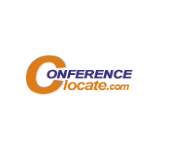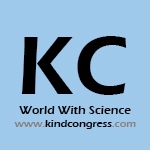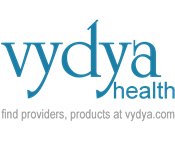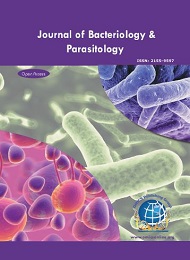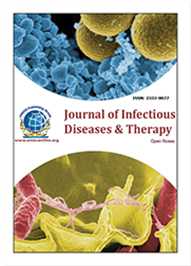Theme: Recent investigation and Improving Access in the treatment of infectious diseases
Bacterial Diseases 2020
ME Conferences is hosting a webinar on “3rd Annual Conference on Bacterial, Viral and Infectious Diseases " during June 18-19, 2020 ; which brings you a series of fabulous researchers, scientists, industrialists etc., who will be sharing their experiences from various perspectives and addressing key questions. The conference highlights the theme “Recent investigation and Improving Access in the treatment of infectious diseases". These conferences prompt keynote presentations, Oral talks, and Poster presentations.
The main motto is to update skills, enhance knowledge base, and networking through virtual platform.
During the period of travel restrictions and lockdown, why waste your time?
Join our webinar to share and gain knowledge on Bacterial, Viral and Infectious Diseases!!
Benefits of joining webinar:
• Reduced costs and affordability
• Access to all sessions online
• Make new connections
• Get your abstracts published with DOI
• Get certified for your participation
• Global exposure of your research
• Increased engagement
• Develop your business
• Monitor your competitor’s activities
• Cost effectiveness
• Significant time saving
• Convenience
Guidelines for presenters:
• Each presenter will have 20-25 minutes for their presentation.
• Plan your talk for 15 minutes to allow for introduction and Q&A sessions at the end of your talk.
• Ensure that you start and end your presentation on the times indicated in the program.
• Language preference- English
Track 1: Bacteriology
Bacteriology is the branch and strength of the biology that reviews the morphology, environment, hereditary qualities and organic chemistry of bacteria and also many other features related to them. The bacteriology study helps in the research of agricultural bacteriology, clinical diagnostic bacteriology, industrial bacteriology, marine bacteriology, public-health bacteriology, and systematic bacteriology. Genetic manipulations of pathogenic bacteria pursue to be indispensable in defining virulence mechanisms. Bacteriology helps in determining the host-parasite relationships involving specific pathogens requires familiarity with the fundamental features of the bacterium, the host, and their interactions. Bacteriology is used in the discovery of the antibiotics and also used in the advancements of vaccines.
- Vibrio
- Enterococcus Family
- Mycobacterium
- Mycoplasma
- Helicobacter and Campylobacter
- Staph, Streptococcus, Corynebacterium, Bacillus and Clostridium
Track 2: Virology
The study of viruses and its characteristics features is termed as Virology. Viruses can infect all forms of life (bacteria, plants, protozoa, fungi, insects, fish, reptiles, birds, and mammals). Viruses are difficult targets for chemotherapy because they replicate only inside the host cells, majorly utilizing most of the host cell's biosynthetic processes. Since a virus must grow inside a host cell, the virus must be viewed together along with its host in any consideration of pathogenesis, epidemiology, host defenses, or therapy. Virology mainly deals with the scientific regulations concerned with the viruses, physiology, molecular biology and viral diseases along with their causal agents.
- COVID-19
- Influenza
- HIV
- Pox and Dengue
- Rabies and Polio
Track 3: Clinical Immunology
Clinical immunology is the study of diseases and disorders that may occur as a result of result of weak immune system including failure, aberrant action, and malignant growth of the cellular elements of the system. Clinical immunology is a medical subspecialty largely focused on a specific physiological process, inflammation, which is essential to good health, particularly in defense against pathogenic organisms, recovery from injury, and containment of neoplasms. Human immunity has two major types: the innate and adaptive immune systems. It also involves diseases of other systems, where immune reactions play a part in the pathology and clinical features.
- Antigen
- Antibody
- Hypersensitivity Reaction
- Autoimmunity
Track 4: Infectious Diseases
Infectious diseases are disorders caused by harmful pathogens such as bacteria, viruses, fungi or parasites. Signs and symptoms vary depending on the organism causing the infection, but often include fever and fatigue. Many infectious diseases, such as measles and chickenpox, can be prevented by vaccines. Public Awareness and Public Health laws are incorporated to prevent and control the transmission of infectious diseases. Aseptic methods, sanitation, disinfection, vaccination, Sterilization, healthy hygiene practices, and early diagnosis do help in preventing and controlling infectious diseases. Most infectious diseases have only minor complications.
- Hepatitis B and C
- Common Bacterial Diseases in plants
- prevalent control strategies
- Primary and Secondary Infection
- Immunotherapy
Track 5: Causes and Diagnosis for Infectious Diseases
Infectious diseases can be caused by Bacteria - These one-cell organisms are responsible for illnesses such as strep throat, urinary tract infections and tuberculosis. Viruses - Even smaller than bacteria, viruses cause a multitude of diseases ranging from the common cold to AIDS. Parasites - Malaria is caused by a tiny parasite that is transmitted by a mosquito bite. Other parasites may be transmitted to humans from animal feces. The major ways for diagnosis of infectious diseases are blood test, urine test, throat swabs, stool sample, and spinal tap. It can be also diagnosed using imaging scans which includes X-rays, computerized tomography and magnetic resonance imaging.
- Symptoms of infectious diseases
- Immunologic tests
Track 6: Therapeutics for Infectious Diseases
Antibiotics are the major therapeutics for the infectious diseases. Antibiotics are usually reserved for bacterial infections, because these types of drugs have no effect on illnesses caused by viruses. The overuse of antibiotics has resulted in several types of bacteria developing resistance to one or more varieties of antibiotics. This makes these bacteria much more difficult to treat. Some diseases, including malaria, are caused by tiny parasites. While there are drugs to treat these diseases, some varieties of parasites have developed resistance to the drugs.
- Epidemiology
- Serology
- Clinical trials
Track 7: Characteristics of Bacterial Infections
A bacterial infection is a proliferation of a harmful strain of bacteria on or inside the body. Infectious bacteria are harmful to human body. They reproduce quickly in our body. Most of the bacteria give off chemicals called toxins, which can damage tissue and affect our health. Examples of bacteria that cause infections include Streptococcus, Staphylococcus, and E. coli. Every time we take in antibiotics, it increase the chances that bacteria in our body will learn to resist them causing antibiotic resistance. Pneumonia, meningitis, and food poisoning are just a few diseases that are caused by harmful bacteria.
- Gram-positive and gram-negative bacteria
- Antibiotic sensitivity determination
- Antibiotic resistance
- Pathogenesis in tuberculosis
Track 8: Characteristics of Viral Infections
Viruses are most harmful pathogens which cause infectious diseases such as the common cold, flu and warts. Most harmful viral infections are like HIV/AIDS, smallpox, and Ebola. Viruses invade living, normal cells and use those cells to multiply and replicate inside the host cells. This can kill, damage, or change the cells and make you sick. Different viruses attack certain cells in our body like liver, respiratory system, or blood. Antibiotics do not work for viral infections. Some viruses alter the cell's functions. In these cases the infected cell loses control over normal cell division and becomes cancerous.
- Acute viral infections
- Viral infections in infants and children.
- Chronic hepatitis
Track 9: Aspects of Plant Virology
It is field of plant pathology that involves in the study of viruses that infect plants and causes harmful diseases. Viruses induce a vast range of both macroscopic and microscopic symptoms in plants that they affect, which causes significant loss of crop yield. Viruses are transmitted through pollen to the seed (e.g. Barley stripe mosaic virus, genus Hordeivirus) while many that cause systemic infections accumulate in vegetatively-propagated crops. Tobacco mosaic infection (TMV) is a single stranded RNA virus that affects most of the plants, specifically the tobacco and different individuals of the family Solanaceae.
- Plant virus
- Sub – viral agents
- Potato spindle tuber virus
- Tomato infectious yellow crinivirus
Track 10: Aspects of Plant Bacteriology
Plant bacteriology is the scientific study of plant diseases caused by pathogens which includes in the identification of bacteria, disease etiology, disease cycles, economic impact, epidemiology of plant diseases, plant disease resistance, the way in which plant diseases affect humans and animals. Most of the plant pathogenic bacteria are rod-shaped (bacilli). They will colonize the plants by using their specific pathogenicity factors. There are five major bacterial pathogenicity factors: uses of cell wall–degrading enzymes, toxins, effector proteins, phytohormones and exopolysaccharides. Agrobacterium species varies the level of auxins which causes tumours with phytohormones
- Characteristics and identification
- Beneficial plant bacteria
- Phytoplasmas and spiroplasmas
Track 11: Human Viral Infections
All the viruses are harmful to human. Ebola Virus disease, HIV virus, Avian influenza, Measles and SARS, hepatitis virus are very harmful which cause severe diseases in human. The relative ability of viruses to cause disease is terms as virulence. The viruses are naturally adapted to be resistance to the antibodies present in the human body. For most of the viral infections, treatments can be given only according to the symptoms while you wait for your immune system to fight off the virus. There are some specific antiviral medicines to treat some viral infections.
- Stem cell transplantation approaches to an HIV cure
- Influenza virus and Parainfluenza virus
- Immunoglobulins Blood Test
Track 12: Human Bacterial Diseases
It is the study about the bacterial diseases, their causal agents, morphology, and diagnostics technique in human. The most common human bacterial diseases are Pneumonia, Cholera, Influenza, Tuberculosis, Measles, Typhoid, Malaria, and Anthrax. Mostly recently discovered viruses are Rift Valley Virus, Oropouche, Mayaro. The Symptoms of Genus leptospirosis is high fever, headache, chills, and vomiting, and may include jaundice, red eyes, abdominal pain, diarrhea. Some exotic diseases are zoonotic which can pass between animals and humans, such as rabies.
- Aerobic and anaerobic culture for bacterial pathogens
- The human–microbe symbiosis
- The indigenous bacteria of the skin
- Pathogenesis in tuberculosis
Track 13: Paediatric Infectious Diseases
Pediatric diseases involve with the child possessing a recurring or persistent disease caused by an infectious agent such as bacteria, a fungus, a parasite, or other rare infection. The most general viral fever in childhood stage is the seasonal flu or influenza. But children might catch milder viral. Generally the childhood viral infections are not serious and include varieties of illnesses as colds with a sore throat, vomiting and diarrhea, and fever with a rash. But there are some viral illnesses that cause more severe disease, such as measles. The Varicella zoster virus (VZV) causes a harmful disease named chickenpox which most generally affects children. Polio is the highly infectious diseases that primarily affect children under the age of five.
- Viral respiratory disease in children
- Bacterial pediatric infections
- Pediatric cancers
- Infections of the fetus and new-born
Track 14: Antimicrobial Agents
A general phrase which includes drugs, chemicals, or any other substances that either kill or slow the growth of pathogens. There are many varities antimicrobial agents like antibacterial drugs, antiviral agents, antifungal agents, and antiparasitic drugs. The discovery of penicillin is the first ever antimicrobial agent. Antimicrobial agents that are used treating diseases include synthetic chemicals as well as chemical substances or metabolic products produced by microorganisms and chemical substances obtained from plants. Few pathogens becomes resistant to antimicrobial agents.
- Bactericidal antibiotics
- Antiviral agents
- Protein synthesis inhibitors
- Natural antimicrobials
Track 15: Vaccines against Infectious Diseases
Vaccines, which are biological preparations that develop immunity to a specific disease, are a vital part of disease prevention. Immunization can prevent the suffering and death caused by infectious diseases like polio, measles, and pneumonia. Immunizations prepare the immune system to ward off a disease. To immunize against viral diseases, the virus used in the vaccine should been weakened or killed. To only immunize against bacterial diseases, it is commonly possible to use a small portion of the dead bacteria to stimulate the production of antibodies against the whole bacteria.
- Live-attenuated vaccines
- Inactivated vaccines
- Toxoid vaccines
- Subunit, recombinant, polysaccharide, and conjugate vaccines
Track 16: Recent trials in Microbiology and Molecular biology
Molecular biology is most advance form of research field to detect the infection by going through the molecular composition of virus. Molecular therapy includes different types of methods such as DNA cloning, proliferation of DNA, bacterial transformation, transfection, chromosome integration, cellular screening, cellular culture, extraction of DNA, DNA polymerase DNA dependent, reading and writing DNA, DNA sequencing, DNA synthesis, hybridization. Clinical microbiology is the branch of microbiology that deals with the study of the molecular basis and any microbes that cause infections. Generally, virology and bacteriology are considered as the subtypes of microbiology of medicine.
- Oncolytic virus therapy
- Microorganisms in human
- Microorganism use in cancer treatment
- Molecular techniques
- Microbial biodegradation and bioremediation
Track 17: Recent Advancements for treatment of Infectious Diseases
New vaccine is being prepared by scientists for the Lyme diseases. The researchers are currently working on the theory to cure severe diseases caused by Rota virus which is a harmful pathogen using Gut Microbiota. Microscopic studies of respiratory tract specimens have been increased to treat patients affected by Pneumonia. The researchers are currently working on the development of effective antibiotics.
- Antiretroviral Therapy
- TB enzyme
- Infectious Disease
- Epidemiology
- Eradication strategies
Bacterial, Viral and Infectious Diseases scheduled during June 18-19, 2020 in webinar provides a platform for research that gives new views into Microbiology, Molecular bacteriology and Virology, Clinical diagnostic methods of Virology and Bacteriology, Bacterial and Viral infections, Animal Bacteriology and Virology, Paediatric Virology, Human Bacteriology and Virology, Medical virology.
Bacteriology and Virology have progressively an important to human society. These are the most important branches of life sciences. As we know that microbes directly or indirectly affecting all the activities of our life like, food, clothing, shelter, health hygiene etc., microbiology has made vast progressive in all these fields to improve the quality of our life and for the betterment of our life. Infectious diseases are very much dangerous and have been conquered by new drugs, good quality of agricultural crops improved by using new techniques of genetic engineering and these are becoming possible only because of Microbiology.
Global Microbiology Testing Analysis Market Report:
The global clinical microbiology market was valued at $3.63 billion in the year 2018 and is forecasted to grow at a CAGR of 6.4% to reach $5.23 billion in 2024. Microbiology testing market is classified into instruments and reagents. In 2018, the instruments product segment accounted for the largest share of the market, however, the reagents product segment is expected to grow at a higher rate during the forecast period. The microbiology testing market is segmented into hospitals and diagnostic centers, custom lab service providers, and academic and research institutes. The key factors driving the growth of this market include ongoing technological advancements in the field of infectious diseases diagnosis, rising incidence of infectious diseases and growth outbreak of epidemics and increased funding and public-private investments for research and innovation.

Vaccine Market Report:
Compare to the pharmaceutical market, the vaccine market id relatively small and concentrated on both the supply and demand sides. It is highly regulated and largely dependant on the public purchase and donor policies. The vaccine market has very distinct features, which increase the complexity of assessing and understanding pricing and procurement. It is made up of individual markets for individual vaccines or vaccine type, each with their own specificities, particularly on the supply side. The global vaccine market was valued at over $32.5 billion in 2015 and is expected to reach over $77.8 billion by 2024, at a CAGR of 10.3%.

Related Association and Societies:
USA:
- Federation of American Societies for experimental biology,
- American society for microbiology,
- Society for Industrial Microbiology and biotechnology,
- Society for Applied Microbiology,
- Society for industrial microbiology,
- International Union of microbiological societies,
- Southern California Branch of the American Society for Microbiology,
- South-eastern Association for clinical microbiology,
- Association of medical school microbiology and immunology chairs,
- The American Association of Immunologists,
- International Union of microbiological societies,
- Infectious Diseases Society of America,
- National Foundation for Infectious Diseases
ASIA-PACIFIC:
- Pan-Pacific Surgical Association Congress,
- Federation of Asia-Pacific Microbiology Societies,
- Malaysian Society of Infectious Diseases,
- Singapore Society for Microbiology and Biotechnology,
- Malaysian Society for Microbiology,
- Asia Pacific Society of Clinical Microbiology and Infection,
- The Philippine Society for Microbiology,
- Federation of Asia Pacific Microbiological Societies,
- International Union of Microbiological Societies;
- Japanese Society of Microbial Ecology
Major Bacteriology and Virology Societies around Middle East
- Asia- Pacific Society for Medical Virology
- European Society for Veterinary Virology
- Italian Society of Virology
- Hellenic Society for the Study of Prevention of AIDS
- Iranian Society of Microbiology
- Bacteriology Association and Societies
- Virology Association and Societies
Major Bacteriology and Virology Associations Globally:
- International Union of Microbiological Societies
- British Infection Association
- International Retrovirology Association
- North American Mycological Association
- Infectious and Immunologic Diseases Research Centre
- Global virus network
- HIV Medicine Association
Major Bacteriology and Virology Association around Middle East
- Pharmacy Organization
- Egyptian American Medical Association
- Coptic Medical Association
- The Journal of Egyptian Medical Association
2nd Annual Congress on Bacterial, Viral and Infectious Diseases organized by ME Conferences in Dubai, UAE during June 17-18, 2019 and were based on the Theme- A step towards advancements in the research, treatment and eradication of Infectious Diseases.
On behalf of our Organizing Committee, we would like to extend our appreciation for continued support and active participation of the Organizing Committee Member, Keynote Speakers and our Moderators for the successful completion of the Bacterial Diseases 2019.
The researchers, Microbiologist, young researchers, students from different countries actively participated in the Conference, discussed the most important trends and issues in analytical sciences. Every Participant was having great reviews and had amazing experiences from the event.
Bacterial Diseases 2019 was started by the opening ceremony which was followed by the Keynote speech and we are overwhelmed with their presence and generous response.
We would like to take the privilege to felicitate our keynote Speakers and honourable guests for their prominent contribution towards the smooth functioning of this esteemed event.
The eminent personalities at the conference were:
- Robert O Young | PH Miracle Centre | USA
- Galina Migalko | Universal Medical Imaging Group | USA
- Ayman Noreddin | University of Sharjah | UAE
- Stef Stienstra | Dutch Armed Forces | the Netherlands
- Mohamad Miqdady | Sheikh Khalifa Medical City | UAE
In the last, we would also like to extend my ward regards to various delegate experts, Company representatives, eminent personalities who supported the Conference by facilitating active discussion forums. We would like to convey our sincere gratitude to all the supporters from Editorial Board Members of our Open Access Journals, Keynote Speakers, Honourable guests, Valuable Speakers, Students, delegates, Work Shops and special thanks to Media Partners for their promotions to make this event a successful one.
With the unique feedbacks from the Conference Bacterial Diseases 2019, we would like to announce the commencement of the 3rd Annual Congress on Bacterial, Viral and Infectious Diseases which is going to be held during June 18-19, 2020 on webinar.
Let us meet again @ Bacterial Diseases 2020
Email us at: bacterialdiseases@memeetings.com
Conference Highlights
- Bacteriology
- Virology
- Clinical Immunology
- Infectious Diseases
- Causes and Diagnosis for Infectious Diseases
- Therapeutics for Infectious Diseases
- Characteristics of Bacterial Infections
- Characteristics of Viral Infections
- Aspects of Plant Virology
- Aspects of Plant Bacteriology
- Human Viral Infections
- Human Bacterial Diseases
- Pediatric Infectious Diseases
- Antimicrobial Agents
- Vaccines against Infectious Diseases
- Recent trials in Microbiology and Molecular biology
- Recent Advancements for treatment of Infectious Diseases
To share your views and research, please click here to register for the Conference.
To Collaborate Scientific Professionals around the World
| Conference Date | June 18-19, 2020 | ||
| Sponsors & Exhibitors |
|
||
| Speaker Opportunity Closed | |||
| Poster Opportunity Closed | Click Here to View | ||
Useful Links
Special Issues
All accepted abstracts will be published in respective Our International Journals.
- Journal of Bacteriology & Parasitology
- Journal of Infectious Diseases & Therapy
- Journal of Medical Microbiology & Diagnosis
Abstracts will be provided with Digital Object Identifier by




